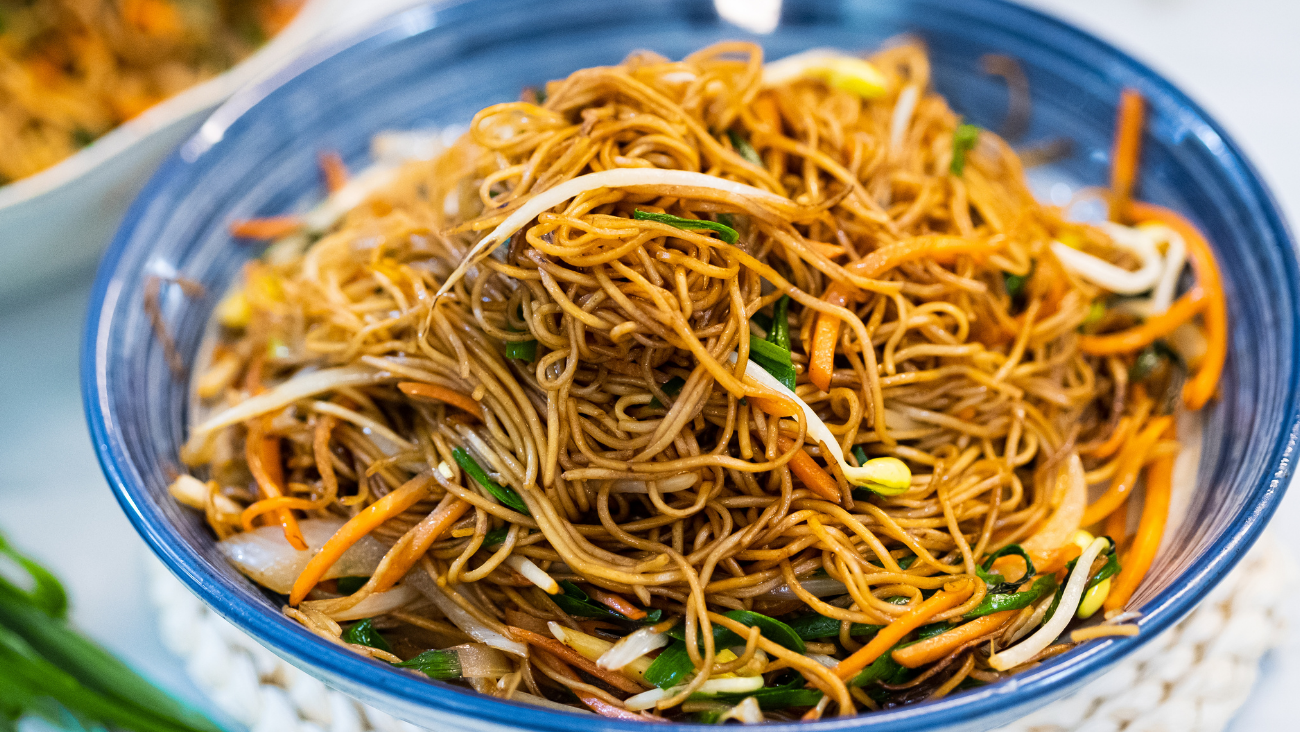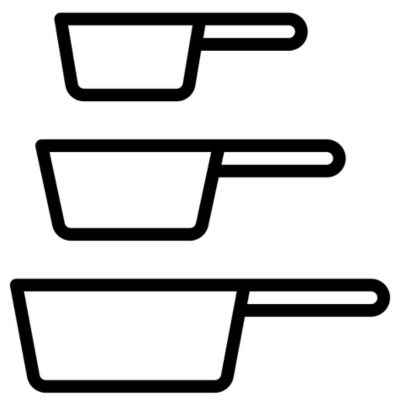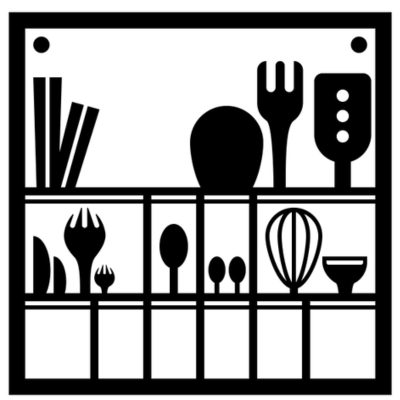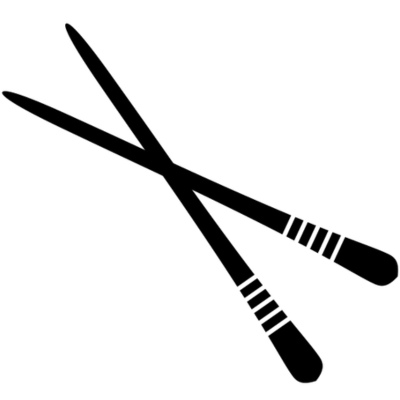Today, we are making Chi You Huang Chow Mein (豉油皇炒面). Chow (炒) is stir fry. Mein(面) is noodles. Chi You Huang (豉油皇) means “the king of soy sauce”. I know it sounds weird, but it is trying to describe that if you cook this right, you can maximize the flavor of the soy sauce and bring this dish to the king level. So 豉油皇炒面 is basically vegetable stir fry noodles that are seasoned with soy sauce.

Additional info: This is a classic Dai Pai Dang (大排档) recipe. For those of you who don’t know about it – Dai Pai Dong is a type of open-air food stall in HK that plays an important role in the local catering culture. It is known for offering affordable but authentic and delicious street food. However, it is declining due to economic development. If you are interested, just google Dai Pai Dong, you will find lots of information.
The recipe is super easy but there are many little details that you need to pay attention to in order to recreate that authentic street food version.
First, let’s talk about the noodles. I got here a pack of fresh egg noodles and a pack of dry forms. Both of them work well for this recipe, but the fresh egg noodles take less time to pre-cook; about 2-3 minutes depending on the thickness. The dry egg noodles take about 3-5 minutes.
You can find the fresh egg noodles in the fridge or frozen section at your local Asian grocery stores. They are usually labeled as wonton noodles. You can also click here to learn how to make it at home.
For the dry egg noodles, they are much easier to get. I have seen them in regular, non-Asian supermarkets. Just pay attention in the noodle aisle, you will find them.

I will be using 300 grams of dry egg noodles for today’s recipe. That is about three servings. If you are using fresh egg noodles, you probably will need about 450 grams as they have different water ratios.
Bring 3 liters of water to a boil. Add a drizzle of olive oil, then toss in the dry egg noodles. The olive oil is going to coat the noodles lightly, so they don’t stick together.

Turn off the heat immediately, and we will let the noodles soak in this hot water for 3-5 minutes, depending on the thickness of your noodles. Stir with a pair of chopsticks and gently loosen up all the noodles. We are soaking them because we don’t want to cook them all the way through; otherwise, they will turn mushy and stick to the wok badly.
Take them out and spread them on a rack for at least 10 minutes. The rest of the heat will help to evaporate the excess moisture.

I know a lot of recipes will tell you to rinse the noodles with cold water to stop the cooking process. I don’t recommend that because it will bring in too much water. Moisture is the number one enemy for chow main; it makes the noodles stick to the wok badly.
Take a pair of scissors to cut the noodles into 6 inches long pieces. This way, they won’t tangle with each other while stir-frying. If they do, they will clump up into a chewy chunk. That is not what we want. You want to be able to toss your noodles freely in the wok, and they will come out nice and airy. If you feel that the noodles are sticky, you can always coat them with a little more oil. Mine was just fine, though.

Divide the noodles into 3 servings and we will cook them in 3 batches as well. This is super important and let me explain why.

It doesn’t matter how big your cookware is. Your home stove heat already decided that you can only cook one serving each time unless you have a commercial stove. I mean, you could cook everything all at one time but you will not get the wok hay effect. Wok hay is also known as the breath of the wok; it refers to a complex smoky aroma and taste that are created by properly cooking the food in a well-seasoned carbon steel wok over extremely high heat. Without that, your stir fry is not authentic.
Each serving only takes about 5 minutes to cook in the wok, so it is not like you a wasting a lot of time by cooking them individually.
Ok, I think I have explained enough for the noodles. Next, we will prepare the vegetables. There are no restrictions. You can use whatever you like, such as cucumber, cabbage, zucchini, spinach… But I want to show you what Cantonese people will use.
40 grams (1.41 oz) of bean sprouts: The roots are edible. You don’t need to remove them, but I am making a video. The thumbnail has to look good, so I removed the roots because they look quite messy.
40 grams (1.41 oz) of carrot: Slice it into thin strips.
40 grams (1.41 oz) of garlic chives: this is called Jiu Cai. If you don’t have it, the green onion will do just fine. Cut them into 2 inches long pieces.
1/4 of an onion: slice it length-wise into these thin strips.
1 clove of garlic: cut it into strips as well. You could mince it, but if everything else is in the strip shape, it makes scents to cut the garlic into strips, right?

This is for 1 serving, so if you are making 3, you have to triple it.

Besides the vegetables, we also need to make the sauce ahead of time because once the heat is on, everything cooks super-fast. You don’t have enough time to open all the bottles and measure out the seasonings.
In a sauce bowl, add 1 tbsp of soy sauce, 1 tsp of dark soy sauce, 1 tsp of oyster sauce, 1/4 tsp of sugar. Stir to mix. This is also for 1 portion. I am serving 3 people, so I made 3 batches.

Turn the heat to high. Heat your wok until smoking hot. Add 2 tbsp of oil. Swirl the oil around to cover the bottom to create a non-stick layer. Add in the noodles. I have serious arthritis, so my wrist will not allow me to toss the wok. I just use two pairs of chopsticks to fluff the noodles constantly. Try not to use a turner or spatula because they are not as flexible. They either cut off your noodles or compact your noodles.

Important note: The heat should be on high the whole time. Not only it helps to get the wok hay effect, but also, it keeps your noodles from sticking to the wok. A lot of people don’t know that, so their noodles always stick to the wok. When that happens, people tend to add more oil to save the dish, but then your noodles will come out extra oily.
Once you see your noodles are getting some tiny charred marks here and there, you can toss in the vegetables. Most home stoves are not as strong, and my portable one is even less so, I recommend adding the sauce in batches. Mix it in, add a little bit more. If you pour in all the sauce, the liquid will drop down the wok’s temperature instantly, which causes the noodle to stick to the bottom.

Once all the sauce is mixed in, the vegetables should be soft. You can turn off the heat and serve the noodles on the plate.

Look at that. Each string of the noodles is perfectly loosened up – so fluffy and airy. If you check the bottom of the plate, you should not see any oil drips. That is the stander for Chow Mein. Just one bite brings me back to my childhood. It is such an easy recipe, but the taste is incredible. The soy sauce is beautifully caramelized and developed depths of flavors. The noodles are toasty. The vegetables are fresh and crunchy. Everything balances so well together. This is the perfect chow mein that everyone should try at least once in their life.









































































